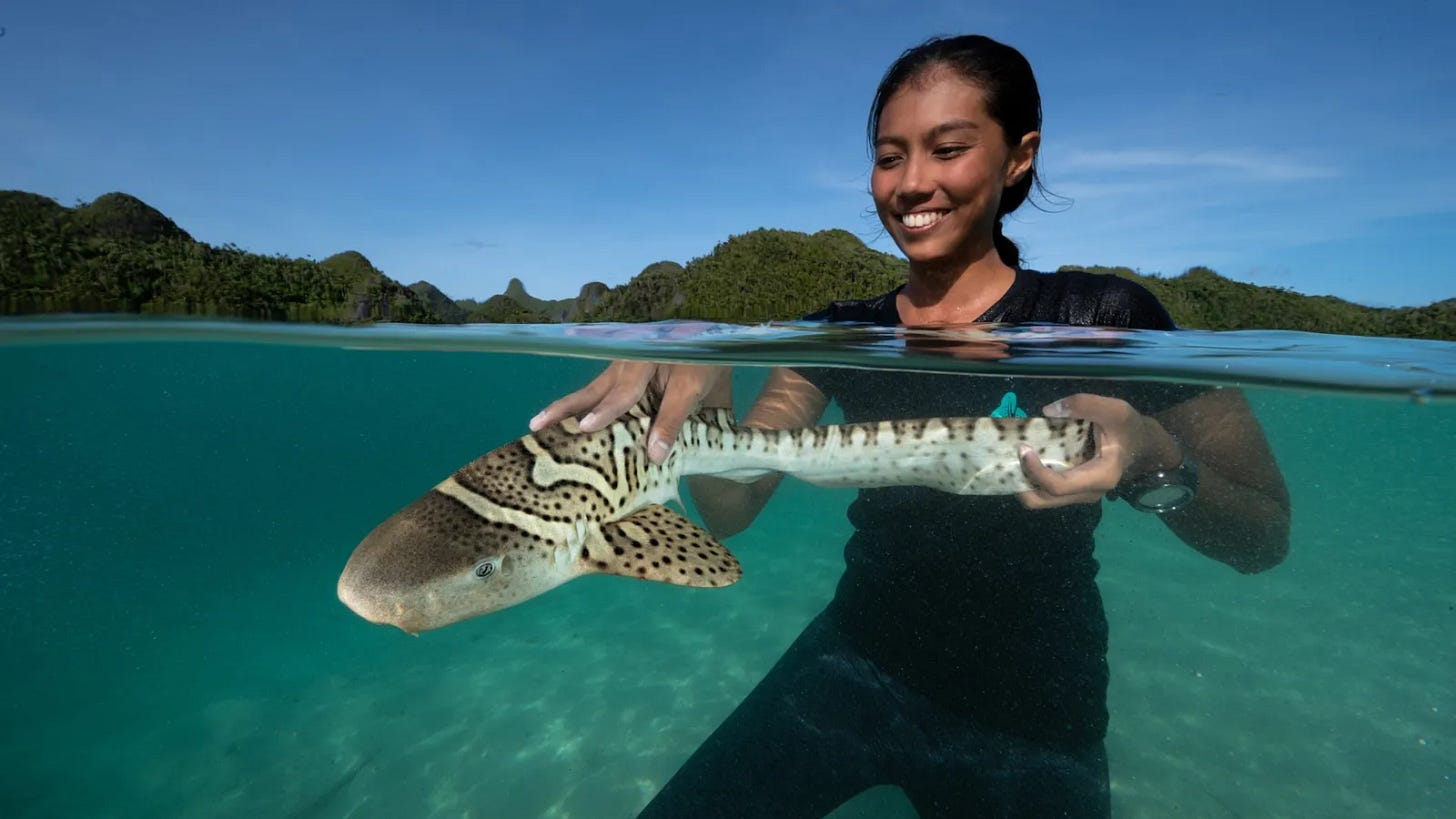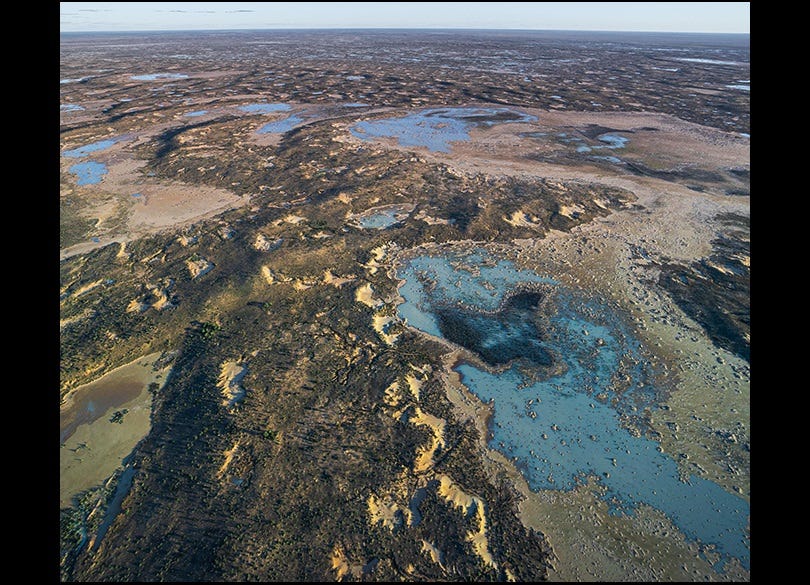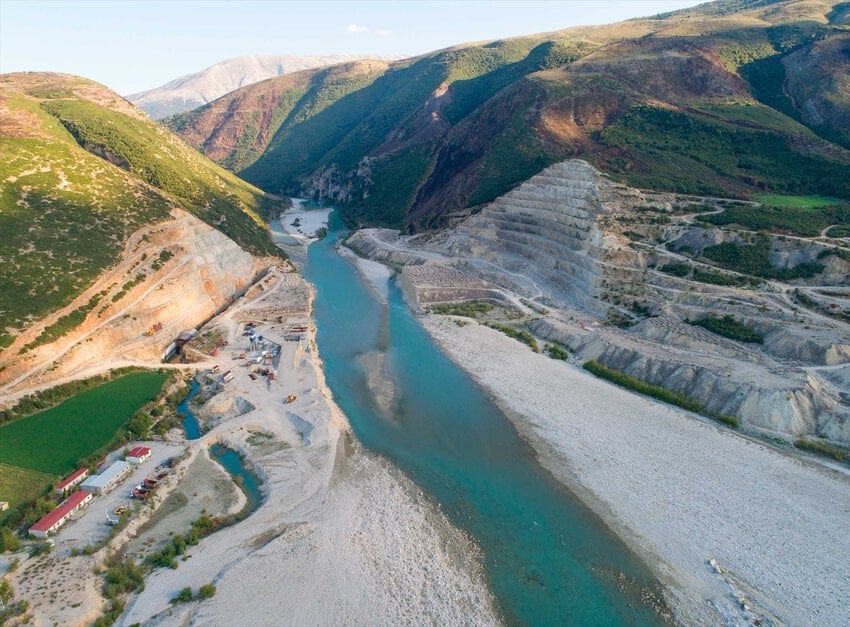The Weekly Anthropocene, March 22 2023
Shark reintroduction in Indonesia, shark surveyors in the Bahamas, new national parks, 81% clean electricity by 2030, and more!
Indonesia

A new global partnership called “ReShark,” comprised of over 60 aquariums, conservation groups, and government agencies, is beginning an unprecedented mass reintroduction of captive-bred zebra sharks into the wild. (The zebra shark is an endangered species, and sharks worldwide are one of the most threatened groups of vertebrates: one paper found that the global abundance of oceanic sharks and rays has declined by 71% since 1970).
Indonesia’s Raja Ampat Archipelago lost much of its zebra shark population by the 1990s due to decades of overfishing, but is now home to a network of nine marine protected areas, providing ample safe habitat. ReShark is planning to reintroduce 500 captive-bred zebra sharks from their aquarium members into different Raja Ampat locations, and is already planning to expand the model to other species, potentially including angel sharks in the Canary Islands and nurse sharks off East Africa among others (check out the full article!). This is an awesome expansion of a time-honored conservation tactics to a group of fascinating papers that need our help more than most-great work!
New Protected Areas
The state of New South Wales, Australia has created the new Thurloo Downs National Park, a 437,394 hectare former cattle ranch (that’s 1.08 million acres, larger than Rhode Island!) with a landscape of rivers, salt lakes, floodplains, and sand dunes home to an array of threatened bird, marsupial, and reptile species.
In the United States, President Biden on March 21st designated two new national monuments, as well as directing the consideration of a potential new National Marine Sanctuary designation around all of America’s Pacific Remote Island waters and issuing an array of other wild lands-related funding opportunities and federal guidelines.
The new Avi Kwa Ame National Monument (506,814 acres in Nevada) preserves an area near the eponymous “Spirit Mountain” sacred to many local Native American peoples, one of the world’s largest Joshua tree forests, and critical habitat for species including the desert bighorn sheep and Gila monster. (For comparison, Manhattan has a land area of about 14,600 acres).
The new Caster Range National Monument (6,672 acres in Texas) will provide more outdoor recreation opportunities to the city of El Paso while preserving a former Army training ground, over 40 archaeological sites and an array of Native American petroglyphs, and habitat for iconic species like the Texas horned lizard, western burrowing owl, and endangered Sneed pincushion cactus.
The potential upcoming National Marine Sanctuary designation would upgrade protections on an astounding 777,000 square miles of American Pacific waters (over 497 million acres, an area larger than Alaska), including the already-existing vast Pacific Remote Islands Marine National Monument plus currently unprotected areas.
Other announcements included new guidance for federal agencies on how to incorporate wildlife corridors into land planning, the release of the 2022 America the Beautiful Report and the first-ever national Ocean Climate Action Plan, and $197 million in Community Wildfire Defense Grants funded by the 2021 Bipartisan Infrastructure Law.
The rising Balkan democracy of Albania has designated the Vjosa River, one of the last undammed wild rivers in Europe and home to over 1,100 species, as the 12,727-hectare (over 31,000 acre) Vjosa Wild River National Park. This effort was partially funded by renowned environmentalist clothing company Patagonia.
America’s Clean Energy Future

A new analysis from the National Renewable Energy Laboratory forecasts that the Bipartisan Infrastructure Law of 2021 and the Inflation Reduction Act of 2022 are set to deliver immense, far-reaching shifts in the American power sector, boosting renewables and reducing emissions and health risks much more than the previously expected pathway. (Here’s the full report, and a Department of Energy fact sheet with an awesome summary graphic).
Their “mid-case scenario” prediction is that the US grid will have about 81% carbon-free electricity in 2030 (up from 41% in 2022, including solar, wind, hydro, and nuclear). This could be much as “best case” 90% clean electricity by 2030 if technology costs drop faster than expected, or a still-respectable “worst case” 71% clean electricity by 2030 if grid interconnection issues take a toll. Before these bills passed, the NREL expected about 52% clean electricity by 2030.
In their mid-case scenario, the NREL also expects power sector carbon dioxide emissions to decline by 84% below 2005 levels by 2030!
And the replacement of fossil fuels will bring substantial health benefits as well due to reduced air pollution: the NREL expects the IRA and BIL to save 11,000-18,000 lives by 2030!
On March 14th, the US Department of Transportation opened the first round of Bipartisan Infrastructure Law funding for EV chargers, kicking off a grant program that will eventually provide $2.5 billion over 5 years for state, city, town, county, and tribal governments to build out publicly available EV charging networks. Applications for this year’s funds ($700 million) are due by May 30, 2023.
The EPA has released a new Good Neighbor Rule, imposing stricter nitrogen oxide emissions restrictions on power plants in 22 states. The EPA expects that this will result in an additional 14 GW of coal plant retirements by 2030 (13% of national coal capacity), reduce NOx emissions by 70,000 tons, and improve the health of 80 million people who live downwind of these power plants. Maine, this writer’s home state, will be a big beneficiary of this, as a state without major coal power that nonetheless suffers substantially from downwind air pollution. Great news!
The Bahamas

In another shark-related marvel, a team of researchers in the Bahamas strapped cameras to a pack of tiger sharks to survey for the first time what they found to be world’s largest-ever known seagrass meadow. Seagrass meadows are an understudied but vital part of Earth’s oceans, sequestering huge quantities of carbon and sheltering multitudes of species. Their new study, combining data from over 2,500 human surveys, eight sharks equipped with satellite tags, seven sharks equipped with cameras, greatly increased human knowledge of these ecosystems: video from the sharks revealed that seagrass in the waters of the Bahamas covered an amazing 25,000 square miles more than expected-already enough to expand the global known area of seagrass beds by 41%. Adding in other data, the researchers suspect that the true area of seagrass in Bahamian waters is more like 36,000 square miles, an area larger than Portugal. Fascinating news-and an awesome integration of wild creatures’ special skills with human technologies!





